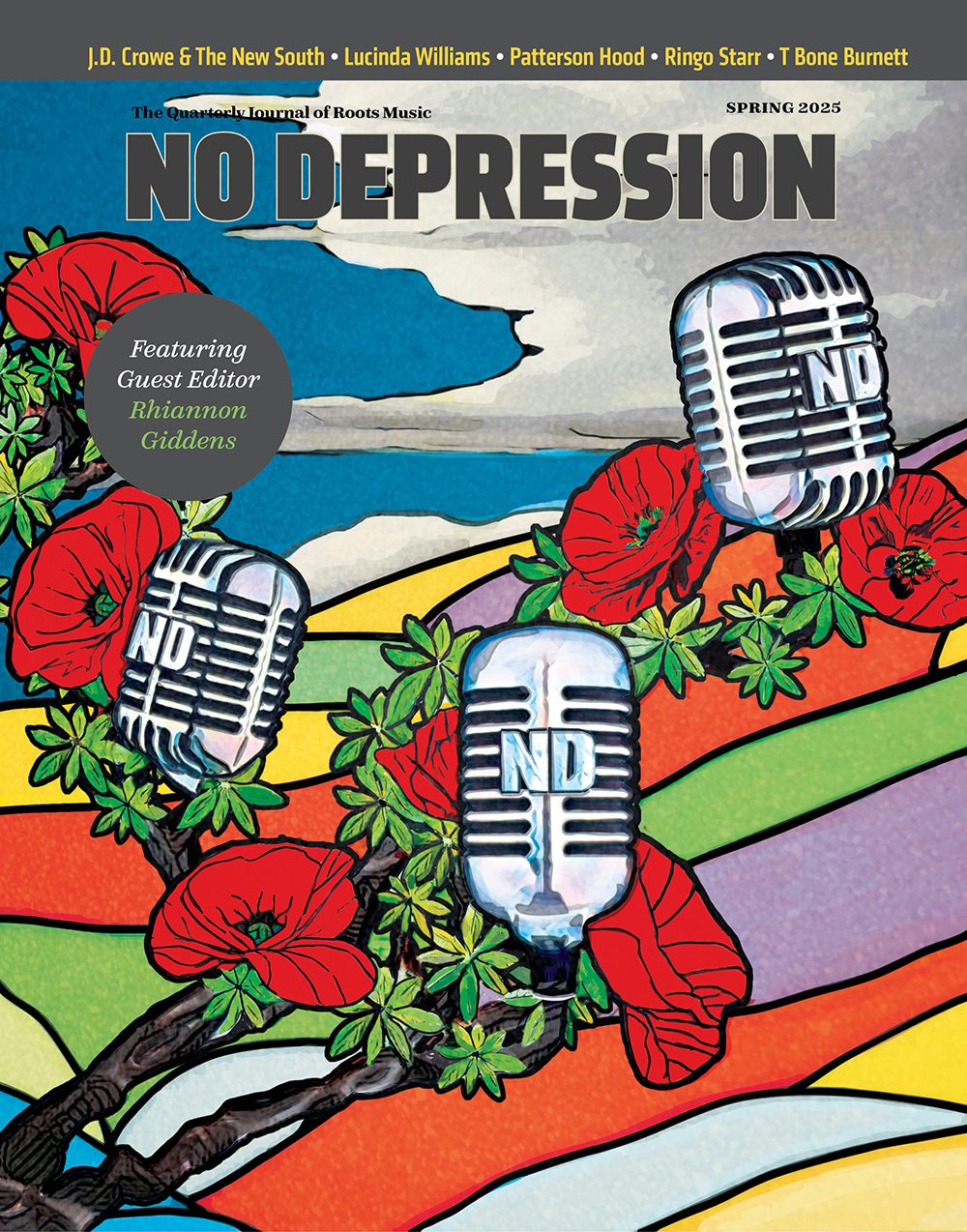Sam Bush – Man with a mandolin
Only a handful — most notably Bush, Ricky Skaggs and Tony Rice — tried to bridge the divide. When Skaggs went mainstream country and Rice stopped singing, only Bush still had a foot in each camp. When the rest of the string-band world was clinging to impressionism or jumping into abstract expressionism, Bush was Picasso, still stretching the form while working with recognizable content.
The revised New Grass Revival stumbled out of the gate as Bush spent most of 1982 combating testicular cancer. After several surgeries, he beat it, and the new lineup took to the road with a vengeance. They introduced themselves with a 1984 Sugar Hill album, On The Boulevard, and were soon more popular than ever.
They were so popular, in fact, that Music Row started paying attention. Jim Fogelsong, president of Capitol Records at the time and a man Bush calls “one of the few gentlemen in the music business,” showed up for nearly every show the band did in Nashville. Eventually, he told Bush, “I’m not sure how we would sell you, but we want you to record for us.”
New Grass Revival released three albums for Capitol — 1986’s New Grass Revival, 1987’s Hold To A Dream and 1989’s Friday Night In America — made two music videos, and placed five different singles in the country Top 100, though none of them got higher than #37.
“It was very simple,” Bush says. “We wanted to get out of the towel truck that our soundman had converted into a van and travel by bus; we wanted to get out of the beer joints and into auditoriums. A lot of people think Capitol changed us, but the bottom line is we recorded what we wanted the way we wanted, and Capitol basically didn’t hear our records until we were finished. Today that’s unheard of, just as it is for a Nashville major label to stick with a band like us for three records.”
By 1989, though, the clock was running out for this lineup. Fleck, now 30, had matured into the premier string-band picker of his generation; he was composing more tunes than NGR could handle and was exploring instrumental ideas that didn’t fit a new grass quartet. That year, the banjoist got the chance to put together his dream band for a special concert in Louisville. Fleck recruited a Chicago jazz pianist named Howard Levy, a Nashville fusion bassist named Victor Wooten, and Victor’s drum-machine-operating brother Roy.
“My wife and I went up to Louisville to see the show,” Bush recalls. “I turned to Lynn during the concert and said, ‘Bela has finally found what he wants to do.’ I knew then it was just a matter of time. That left the other three of us. We looked around and asked, ‘Where do you get another banjo player after Bela?’ Well, you don’t. So we asked, ‘Do we really want to start all over again with a new sound and a new direction?’
“The answer for me was ‘No.’ I had done the New Grass Revival for pretty much all my adult life, and I needed a change. I was in charge of the business, and I was suffering from responsibility overload. I realized I needed to stop. My intention was to stop going on the road.”
But just like a gangster trying to leave the mob, every time a road musician tries to quit, he gets pulled back in. Before NGR had even played its final dates (including a grand-finale New Year’s Eve show with the Grateful Dead at Winterland in Oakland, California), Bush got an offer he couldn’t refuse.
“In December of ’89, I got a call from Emmy asking if I wanted to help her start up an acoustic band,” he recounts. “How could I turn her down? She was an amazing singer who had brought class and respectability to country music. I told Emmy that I would welcome playing music for her, but the rules were these: I don’t make any decisions. It’s your band; you make the decisions. I need a break from decisions. The only decision I want to make is what socks to wear.”
Emmylou Harris & the Nash Ramblers (Harris, Bush, Larry Atamanuik, Roy Huskey Jr., Al Perkins and Jon Randall Stewart) were together for five years and recorded two albums — 1992’s Live At The Ryman and 1993’s Cowgirl’s Prayer. It ended when Harris made another radical left turn in 1995, releasing Wrecking Ball with producer Daniel Lanois and forming the touring band Spyboy with Buddy Miller.
Once again Bush was at loose ends, but Howard Levy had left Bela Fleck & the Flecktones, and Fleck asked his old bandmate if he’d be a special guest on some of the trio’s dates. Bush ended up doing 68 shows with the Flecktones in 1995.
“Live Art was recorded during that time,” Bush recalls, “and I got my second Grammy. Those shows had almost nothing to do with bluegrass; for me, it was a jazz-rock gig. But after five years with the Nash Ramblers, Bela reintroduced me to the joys of open-ended solos. After working on my singing with Emmy, I remembered how much I enjoyed improvising and getting down. So the next step was for me to start making my own records again, both improvising and singing.”
Glamour & Grits, released by Sugar Hill in 1996, wasn’t Bush’s first solo album — he had made Late As Usual for Rounder in 1985 — but it was his first with his own band that he could take out on tour. That quartet — Bush on fiddle and mandolin, Randall on acoustic guitar, Cowan on electric bass and Atamanuik on drums — reflected Bush’s belief that drums and bass could work in a string-band setting, no matter if the purists howled.
“It all depends on the drummer,” Bush contends. “There’s so much going on in bluegrass that tom-tom fills and cymbals can cancel out the subtlety of string-band instruments. You have to learn to establish the beat without taking up too much sonic space. Larry defined that style in Emmy’s band and carried it on in my band. My current drummer, Chris Brown, has a jazz background but is very sensitive to bluegrass arrangements.




